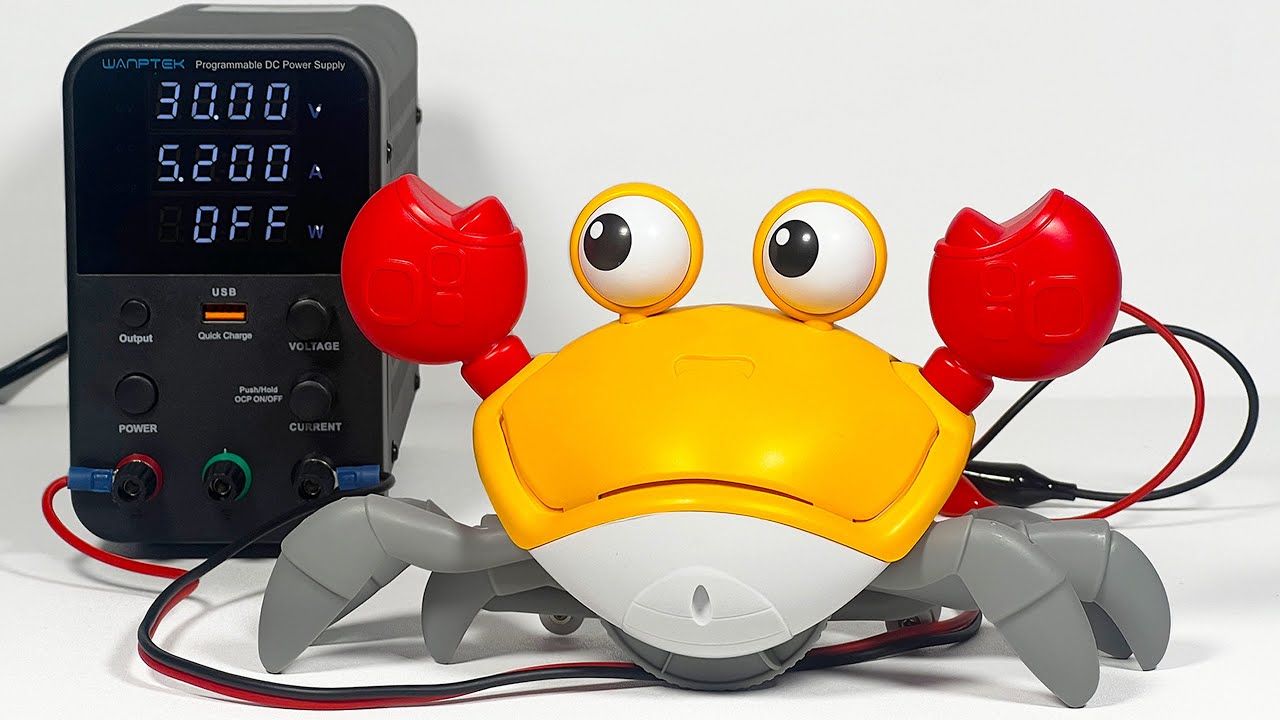This entire series is so oddly entertaining.
This sent me into stupid giggles by the end
“High voltage” is generally voltages above 1500V dc
this isn’t even low voltage
Also, that crab is pure nightmare fuel. Enjoy!
The crab and dog are quite unsettling
yeah idk if I could call it satisfying
I did say entertaining 🤷♀️
Loved it! The dog was my favorite.
Loved seeing Thomas the Tank Engine lose his mind.
Tracks? Where we’re going, we don’t need tracks!
He went from casual stroll to KANSEI DORIFTO!
Not really dangerous, 30 volts isn’t gonna kill you
Dude is a famous OP in China shooting a lot of these stuff, quite hilarious, recommend to check out other vids as well.
Dammit it makes me want to buy a variable voltage DC power supply!
This was great. The Thomas The Tank Engine had me laughing
I had such fucking hopes for you, crab.
This showed up on my recommended videos. I didn’t expect it to be hilarious.
Shouldn’t amps make the difference?
Most stuff will draw what it needs for amps. A power supply that provides insufficient amps may fail to start the device, or the power supply will overheat.
Supplying too many volts will fry many electronics though.
If you have a 19V 3A laptop it’ll be happy with a 19V 5A brick, but probably not so much with a 25V 3A brick which may overload a component and release the magic smoke
magic smoke
This is my second time today seeing that term, and never saw it before today. I kinda assumed it was a tongue-in-cheeky way to say toxic fumes that make you hallucinate or get cancer lmao
Turns out it is a real actual term and I am stupid
I’m am electrical engineer and I thought the same as you. Had no clue it’s a defined term
Correct me if I am wrong, but doesn’t voltage determine amperage? 12 volts through 6 ohms makes 2 amps, and 6 volts through 6 ohms makes 1 amp, right?
In general, Voltage and resistance determine amperage, that’s right.
Yes and no. These are AC/DC adaptors so they’re rectifying the AC current (+/- AC to DC) and using transformers, resistors, etc to step down the voltage. Watts is V*A
On a power brick, the numbers of a matter of how many volts it pushes out and how fast it can push them out (amps).
The components inside your laptop need a relatively fixed amount of power at a variable amount of current. If it’s working harder, it may pull power now quickly using more watts of power. The components within the laptop are designed with that amount of power in mind and the resistance is fixed within a certain tolerance.
The brick is similarly designed to provide a relatively constant amount of power at a maximal rate. You’ll notice that a brick heats up with use. Pull power through it faster than capacity and it’ll overheat and die.
If you compare to home electricity, think of it like this.
-
110V, 15A appliance in 220V, 15A circuit. That appliance is gonna melt something and catch fire. This is like a laptop with an over-voltage brick
-
220V, 15A appliance in a 110V, 15A circuit, it’s probably not going to start or run properly. This is a laptop with an under-voltage brick
-
110V, 30A appliance on a 110V, 15A circuit. It may run for a bit if it doesn’t immediately draw over the 15A, but when it does the breaker trips or a fuse pops (if they’re working). If you have a bad breaker or fuse that doesn’t trip in time, the wires in your wall will actually heat up and either burn out or set your house on fire
In the home circuit, that 110V is the constant voltage and 15A is a maximum. You can plug in a 1500W ([email protected]) microwave, or a 20W ([email protected]) wall wart. Just like the circuit from the wall to your panel, your brick has a fixed volts and max amps. Your laptop has a fixed volts and variable amps.
-
Is this an ad? You’ve posted this channel twice so far.
It’s not an ad, lmao. I have no affiliations with this channel, just saw he posted a part two and as people enjoyed the first, thought I’d share another from the series.
Edit: shiiieeet I wish it was an ad, then I’d actually be getting paid for it






